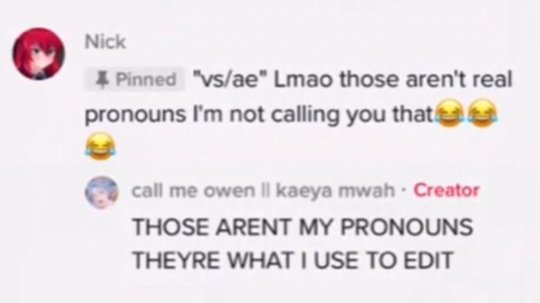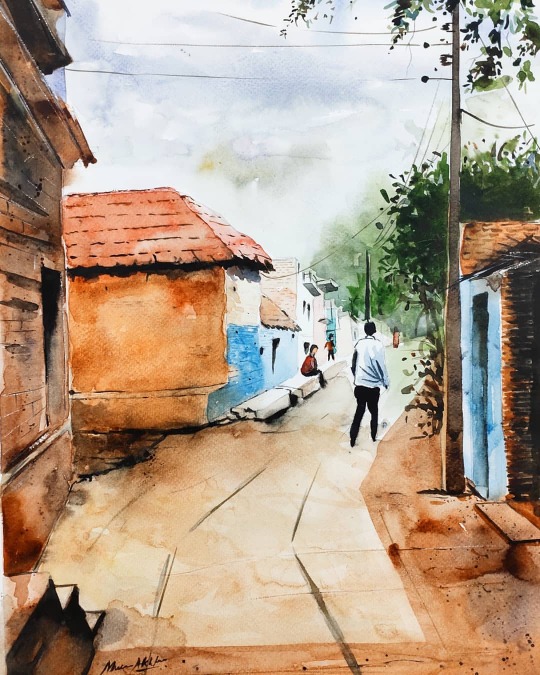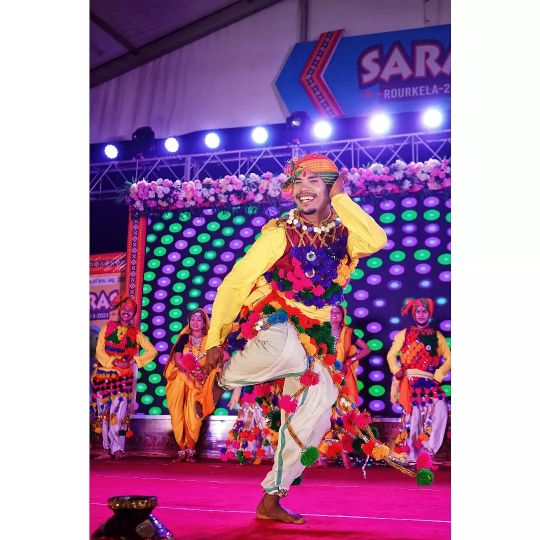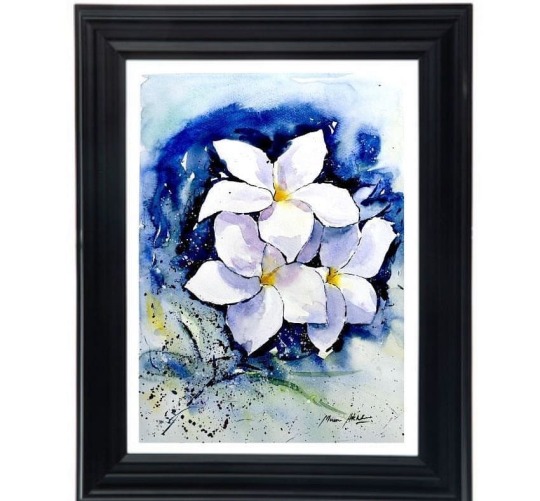#bundelkhandi
Explore tagged Tumblr posts
Text
हाओ



264K notes
·
View notes
Text
Bundelkhand News | Bundelkhand 24x7 Bundelkhand 24x7 is the fastest growing online news platform, which focuses primarily on political, infrastructure, and social issues.
#Bundelkhand#History of Bundelkhand#District of Bundelkhand#Bundelkhand Heritage#Latest News of Bundelkhand#Bundeli#Bundelkhandi
0 notes
Text
Orchha & Khajuraho: travel back in time | Transforming Travels transformingtravels.com
If you love the rich Indian heritage and its mind-blowing architecture, then the trip to Orchha, Khajuraho, and Gwalior will be among the most memorable trips of your life. In fact, these towns are home to world-famous monuments & temples. While learning about the great stories of rulers from history, their beautiful forts, and the temples of Khajuraho, you also romance nature while visiting Panna National Park.
Orchha & Khajuraho, and even Gwalior are the princely towns in the Bundelkhand region of Madhya Pradesh, that are a constant reminder of India’s past glory and the magnificent forgotten past.
Orchha, one of the finest offbeat travel destinations in the country, is a picturesque town located on the banks of Betwa river in central India. Frozen in time, the grandeur of Orchha’s forts, palaces, temples, and ghats transport us back in time. The 16th century Bundelkhandi architecture with Mughlai influence tells tales from history through its intricate stone carvings. Chaturbhuj temple dominates the skyline of Orchha while on the other hand, the cenotaphs, when viewed from the other end of the river make a beautiful backdrop during the time of sunset.
0 notes
Photo

मैं स्वर्ग का एहसास लिखूँ तुम 'चित्रकूट' समझ लेना | Jay shree Ram ♈ Landscape photography @shivamsinghbaghelclicks #chitrakoot #utterpradesh #mp #chhatarpur #jhansi #pryagraj #of #beauty #tulsidas #ram #india #madhyapradesh #instagood #panna #maihar #smartcitysatna #sitaramam #naukavihar #saryu #bundelkhandi #satnacity #instagram #mahoba #shivamsinghbaghel #khajuraho #allahabad #ramghat #garhimalehra #photography #shivamsinghbaghelclicks (at रामघाट चित्रकूट धाम) https://www.instagram.com/p/Cl5cOkrhqLc/?igshid=NGJjMDIxMWI=
#chitrakoot#utterpradesh#mp#chhatarpur#jhansi#pryagraj#of#beauty#tulsidas#ram#india#madhyapradesh#instagood#panna#maihar#smartcitysatna#sitaramam#naukavihar#saryu#bundelkhandi#satnacity#instagram#mahoba#shivamsinghbaghel#khajuraho#allahabad#ramghat#garhimalehra#photography#shivamsinghbaghelclicks
0 notes
Photo

One more piece of work with Watercolor from the Village of Bundelkhand area. Watercolor on paper. #watercolors #watercolortimelapsepainting #watercolorist #watercolorpaintings #watercolordrawing #internationalwatercolorsociety #watercolorflowers #watercolorart #myart #artoftheday #artoninstagram #aquarellaart #aquarella #aquarelle #bundelkhand #bundelkhandi #fineartistmueen #mueen #mueenakhtar #jhansi #artist #art #flora #timelapse https://www.instagram.com/p/CS71RTrhZok/?utm_medium=tumblr
#watercolors#watercolortimelapsepainting#watercolorist#watercolorpaintings#watercolordrawing#internationalwatercolorsociety#watercolorflowers#watercolorart#myart#artoftheday#artoninstagram#aquarellaart#aquarella#aquarelle#bundelkhand#bundelkhandi#fineartistmueen#mueen#mueenakhtar#jhansi#artist#art#flora#timelapse
0 notes
Text
by amita chaturvedi and syaahi team
On how Maitreyi Pushpa tears up Bundelkhand and pastes it back together in her stories. This article is part of our series on marginal literary cultures in regions often unjustly collapsed with the category of ‘Hindi’.
Surrounded by the valleys of Vindhyachal, Bundelkhand stretches across Uttar Pradesh and Madhya Pradesh. It spans a varied geography and an even more diverse social and cultural milieu. The region has been home to many tribes including the Raut, Bheel, Sahariya, Shabar, Kol, Nishad, Pulind, Kirad, Nag, and others; each with their own distinct languages. Sounds of Danghai, Chaurasi, Pawari, Vidishiya echo in different slices of the expanse. Bundeli is pre-eminent.
Literary tradition in the language dates back almost seven centuries. The epic Alaah-Khand song- style holds a special place in its literary canon despite being in the oral form. Composed by the Bundeli poet Jagnik, the invocation is sung in rural areas on the days of heavy downpour. The prose of Mahabharata and Ramayana written by Vishnudas are also important windows into the canon.
Despite a rich history, Bundeli has not been accorded the same respect as other languages within mainstream literary discourse. But that hasn’t stopped the brilliant writer Maitreyi Pushpa from placing the tongue at the heart of her works. Her 1999 novel Idannamam (This Is Not Mine) published by Rajkamal Prakashan is especially significant in this context. While at some terse points it ties Bundelkhand’s urban and the rural, Idannamam offers a replete depiction of the rural. It is the rural that becomes the primary space for Bundeli to reside in the fiery novel. The language pulsates fluently in the novel, identifying with the daily life and grainy textures of the region it flows within. Pushpa also brews life into her characters by paying attention to the story’s soundscape. Characters converse in Bundeli. Folksongs weave freely in and out of the narrative.
Mandakini, the protagonist of Idannamam, is a woman eager to help the people of her village in resolving their problems. Her own burdens mount heavy. The stories composing her village unfold alongside that of Mandakini’s. Her grandmother Bau always stands by her. Bundeli primarily resurges in the words spoken by Bau and other elderly characters, signifying a generational shift from Bundeli to Hindi, a transformation familiar to many northern areas in India.
The narrative of the novel has been written in Khari Hindi. Modern Hindi literature, which typically utilizes Khari Hindi, can be at times devoid of the grainy sounds common to specific linguistic contexts. Khari Hindi is, at certain points, unable to root itself in local realities. It floats above. It sounds, literally, disconnected to the people in the narrative. Literature attempting to carve out the daily that pulls out tonalities unique to a place can then strike the right chord. How we talk to one another is deeply bound up in how we experience life amongst each other. People, their rituals, their labour, their environment, their beliefs, their relationships. All of these and more inform how they speak about their lives. Bundeli, then, is the passage they walk through to make sense of their world.
Accomplished Hindi writer and publisher Rajendra Yadav, in his introduction to Idannamam, notes
Amidst the refined and bland language of the Hindi fictional literature, Maitreyi has written the story of this village in the natural style of folk literature, as if Manda and the people around her are speaking their own minds- in their own language and dialect, with a Bundelkhandi rhythm… amidst the rumbling of crushers and tractors around them.
The rhythm of their life, Bundeli, resounds between the humdrum of their transforming world.
Having spent most of her early life in Bundelkhand, Pushpa is well versed with not only the language but the social world it finds itself in. The folk songs she strategically makes use of in Idannamam are a testament to this knowledge.
In one moment, a prayer sung in Bundelkhand appears in Idannamam
Vindhya Pradesh zila Tikamgarh,
Nagar Orchha gram,
Ki Janhh Raaje Siri Bhagwan.
(Vindhya Pradesh, district Tikamgarh,
City Orchha town,
Where sits Lord Almighty)
The song drops the reader right where God sits.
In Bundelkhand, verses of valour are far more prevalent than songs of courtship or marriage. Idannamam includes a song of courage which is part of the legion of Suata. In the region, Suata is sung by girls as performances known as Suata Khelna (Playing Suata).
Suata, also known as Naurata, is an important Bundeli festival. It arrives in the Hindi calendar month of Kwaar (typically falling in the Gregorian period of September to October). Young girls collectively worship and play Suata at the dawn for nine continuous days. One of the songs from this tradition is given space in the novel. Though the song does not lend to the narrative’s movement, it offers a fuller life for the story’s characters. A life closer to their own.
Tin ke phool tinahi ke daane,
Chanda uge bade bhunsare.
Sare baare phool siraye,
Kaath kathile kaathe se,
Paanch bhaiya panda se.
Chhoti behen ingur si.
(Whosever are the flowers, the seeds belong to them, The moon rises at early dawn.
All the flowers are floated in water,
With bodies as strong as wood,
All five brothers like Pandavas.
Sixth sister is like vermilion.)
Similarly, “Kartik Nahana” (bathing in the month of Karthik or October to November) is another ritual observed by rural women who visit a local well together to bathe and pray.
Kanhaiya mangta daan dahi kau, Nahaat mein cheer hare sab hi kau, Gopika kyun itrani re.
(Kanhaiya asks for curd, Steals the clothes of Gopikas while they bathe, Why do they get flattered)
Women are prohibited from telling lies to each other during Kartik Nahana. They must reveal private information about their lives such as their sexual relationships with their husbands or other men to successfully complete the ritual. Hiding is a sin. Although the example depicted in the novel could be symbolic of the sexual liberation of women, it could also be interpreted as notions of sin and interior privacy for a woman in Bundelkhand.
Apart from exploring the complex lives of women characters in Bundeli, Pushpa has also provided a very lively description of the visual expanse looming large in Idannamam. Rivers, hills, dams, homes, vegetation, moors. Bundeli becomes the architect of and architecture for the body of Bundelkhand.
“Ja biyaban ko kya kahain! Raat ke samay ye bharka nahin dikhane the. Matti ke jitek unche dunh, utek hi neechi khaai! Ped na ruukh! Katile jhund-hi-jhund!”
(What to say about this desert! These dunes are not visible during the night. The cliffs are as deep as the dunes of soil are high. Neither any trees nor a bush! Only thorny shrubs everywhere!”)
Pushpa also leaves open and bare in plain sight the political and economic webs swallowing the region. Her rural characters are forced to rely on people and institutions in the city for exercising political maneuvers, negotiating legal issues, and, of course, seeking medical treatment. Through this asymmetric exchange, the protagonist Mandakini reckons with the absence of village infrastructure and the gulf that exists between the rural and the urban.
The construction of a hospital in the novel is intrinsically linked to Mandakini’s life. Infrastructure is embodied within her character. In the narrative, Mandakini’s father is responsible for the hospital. The first of its kind in the village. But playing to her authorial strengths of heightened drama, Pushpa engenders a sequence wherein her father is murdered by political strongmen. A stampede ensues. Many die. A life-saving hospital is inaugurated with a blood bath. A child at the time of the tragic event, Mandakini grows up determined to realize her father’s vision. To restore the hospital and mitigate the reliance of the people in her village on largely inaccessible urban infrastructure, all while mending her own inner turmoil.
Language, once again, becomes the fulcrum for this commentary. Bundeli and Khari Hindi constantly collide in the form of conversations between rural and urban characters. These conversations are centered on corruption, electoral battles, economic anguishes, political promises, and other issues the region faces even today.
The crushers and tractors Rajendra Yadav spoke of also point to a larger process within the novel of ecological loss and resultant economic turmoil. Tribal communities and labouring farmers have lost their lands, their homes, their source of livelihood to exclusionary development. The blasts at the crushers. The explosions. They all also pose a threat to the communities’ safety. Workers at crushers too fall to a plethora of health problems like asthma and respiratory issues, tuberculosis, and others.
Idannamam also raises challenges faced by Bundelkhand’s Scheduled Tribes and adivasi groups. With the government acquiring quasi-ownership of the forests, the tribal population has faced displacement and economic crisis. Tribal communities of Bheel, Sahariya and Raut who traditionally survived on hunting and tree-logging are redeployed as cheap labour exploited by public and private sector contractors. Mandakini also struggles to get employment opportunities for the residents of her village.
Hindi and Braj language poet Dr. Dhirendra Verma has written in Hindi Sahitya Kosh,
A writer very cautiously includes the regional landscape, nature, climate, festivals, folk-songs, specific conversational styles, idioms, sayings, specificities of dialects, specific behavioral and natural qualities of people, their romance, moral beliefs etc. to depict regionality in their work.
In Idannamam, this cautiousness translates not to the inclusion of regional particularities but the universal spirit of the novel. Despite containing all the elements of regionality, Maitreyi Pushpa does not regard Idannamam as a regional novel. In an interview to this writer she said,
Idannamam is a novel of Bundelkhand region and therefore it can be regarded as a regional novel. But it is not regional at all. This novel is being taught in the entire country. People everywhere consider it as a sociological novel rather than a regional novel. Today the condition of all villages is the same as that of the villages in Bundelkhand. That’s why I consider it as novel of the entire country because it is related to the entire country. It belongs to the entire nation.
This quality of transcending boundaries, whether linguistic or cultural, jumps out of her novel. It is because she affixes her narrative so strongly within a specific context, that she can reveal universal notions. The rural, especially, is highly local and yet evokes the hierarchies and struggles inherent to rural life across northern India. And this evocation would not be possible without Maitreyi Pushpa prioritising Bundeli.
Screenwriter and playwright, Javed Siddiqui in a discussion on Urdu said that your tongue is that which you dream in. We dream and think through language. Our literature exemplifies this. It is, then, crucial to empower regional languages and tongues like Bundeli and understand their capabilities for pushing creative boundaries of the literary space. Only then will we able to dream bigger and better. Only then will we be able to say that literature is indeed ours.
19 notes
·
View notes
Text
A thread on Hindi imposition debate. #HindiDiwas
At the time of India’s Independence, Hindi was still a language in the making. The geographical reach of Hindi was not bigger than that of Telugu or Bengali. Hindi was not the mother tongue of people in Awadh, Braj, Mithila, Magadh, Bundelkhand, Ahirwal, Nimad, Marwar or Mewar.
In these areas, each language is unique and it is not easy for a Maithil person to understand Bundelkhandi or Brajbhasa.
As Hindi was not standardised in 1947, the government tasked the Central Hindi Directorate to do so.
After much deliberation, it was decided to use roman numerical. It is still not settled whether to use Persian/Arabic/Turkic words in Hindi or not and what is better, Sanskritised Hindi or Hindustani.
Echoing this sentiment, former CM of Madras Presidency and Rajya Sabha member P. Subbarayan presented a dissent note to the 1st Official Language Commission.
Subbarayan said “People who possess as their mother tongues well formed languages with a continuous literary history of over thousand years and more like Bengali, Assamese, Oriya, Marathi, Gujarati, Telugu, Tamil, Kannada and Punjabi feel very difficult about accepting this new policy about official language, particularly when by direct and indirect means, it is attempted to be forced upon them.”
Hindi was given priority over other languages in the Constitution.
Article 351 says, “It shall be the duty of the Union to promote the spread of the Hindi language, to develop it so that it may serve as a medium of expression for all the elements of the composite culture of India and to secure its enrichment by assimilating without interfering with its genius, the forms, style and expressions used in Hindustani and in the other languages of India specified in the Eighth Schedule, and by drawing, wherever necessary or desirable, for its vocabulary, primarily on Sanskrit and secondarily on other languages.”
This idea of making Hindi “a medium of expression for all the elements of the composite cultures of India” is flawed and deeply contested. Hindi was accorded this coveted position by the Constituent Assembly and not by Parliament consisting of elected representatives.
North Indian Hindi-speaking members of the Congress party in the Constituent Assembly insisted that Hindi was accepted as the Official Language of the Indian Union.
In the post-Independence era, Hindi grew but the growth was not organic. The Union government spent money to promote Hindi especially in non-Hindi-speaking areas so that it may be accepted as the link language nationally.
The Department of Official language was given specific task that involved “co-ordination in all matters relating to the progressive use of Hindi as the Official Language of the Union, including administrative terminology, syllabi, textbooks, training courses and equipments.
There is a Hindi training programme in place for central government employees since 1955.
The presidential order dated 27 April 1960 said “in-service training in Hindi may be made obligatory for Central Government employees who are aged less than 45 years.
The Union government is running these programmes across the country. In government departments across India, Hindi Day is celebrated and essay and typing competitions are held. Government rewards good performers in these competitions.
There is an Official Language Wing in the law ministry, which translates all government bills in Hindi. At the same time, no incentive is given to Hindi-speaking employees for learning other Indian languages.
In the field of education, the 1st Official Language Commission had put much emphasis on introduction of Hindi as compulsory subject in secondary schools in all non-Hindi areas, so that the next generation of Indians may be Hindi-knowing, It brushed aside the suggestion that students in Hindi-speaking areas in secondary schools should compulsorily learn another Indian language.
The Commission instead suggested that options for these students should include languages like Sanskrit, French, German, and Russian.
This was the mainstream idea related to the language policy just after the Independence that non-Hindi students must learn Hindi, but Hindi students should study Sanskrit or some foreign language.
Mass media also played a crucial role in the proliferation of Hindi. Until the 1990s, the Union government was in sole control of radio and television. Television broadcasting started in 1965 and till the mid-1990s, most of the programming was in Hindi.
Only after regional stations were established that things started to change. But by that time, the foundation had already been laid. During 1983-1991, many popular programmes and serials were launched in Hindi.
Mythological serials like Ramayana and Mahabharata became powerful vehicles to carry Hindi with the religious massaging.
2 notes
·
View notes
Text
youtube
Bundeli Rai Dance | Bundelkhand 24x7
Experience the vibrant and energetic Bundeli Rai Dance of Bundelkhand. Discover the rich cultural heritage of this traditional dance form that has been kept alive for centuries. Join us at Bundelkhand 24x7
#Bundelkhand#History of Bundelkhand#Bundelkhand Heritage#Latest News of Bundelkhand#Bundeli#Bundelkhandi#Youtube
1 note
·
View note
Text
Amidst the lockdown, the workers are being entertained by the Bundelkhandi folk dance in Delhi
Amidst the lockdown, the workers are being entertained by the Bundelkhandi folk dance in Delhi
Maharashtra
DistrictCases
Mumbai3029
Pune660
Thane465
Nashik96
Nagpur76
Mumbai Sub Ur67
Yavatmal32
Aurangabad30
Sangli27
Ahmednagar27
Sholapur21
Buldhana21
Palaghar17
Akola17
Raigad17
Satara14
Kolhapur8
Latur8
Ratnagiri7
Amravati6
Jalgaon3
Osmanabad3
Sindhudurg (kudal) 2
Chandrapur2
Dhule2
Beed1
Washim1
Parbhani1
Jalna1
Nandurbar1
Gondia1
Hingoli1
Details Awaited * 3926
8590 522
6939 401
1282 94
View On WordPress
0 notes
Photo

Athiya Shetty has a Hard Time Speaking Bundelkhandi For Motichoor Chaknachoor Actress Athiya Shetty, who will be next seen in Motichoor Chakhnachoor opposite Nawazuddin Siddiqui, revealed how learning Bundelkhandi was a challenging yet fulfilling experience. via Top Movies News- News18.com
1 note
·
View note
Photo

“To watch us dance is to hear our hearts speak.” . . . #anupamsm #dance #folkdance #bundeli #bundelkhand #badhaidance #badhai #dhotikurta #smile #laugh #enjoylife #rourkela #odisha #naveenpatnaik #sarasmela #jbp #jabalpur #potd #featured #happydance #folkdance #bundelkhandi #lokraag (at Rourkela, Odisha, India) https://www.instagram.com/p/CoP_ZP3hbFv/?igshid=NGJjMDIxMWI=
#anupamsm#dance#folkdance#bundeli#bundelkhand#badhaidance#badhai#dhotikurta#smile#laugh#enjoylife#rourkela#odisha#naveenpatnaik#sarasmela#jbp#jabalpur#potd#featured#happydance#bundelkhandi#lokraag
1 note
·
View note
Photo

Another Watercolor Flower painting. One more from my watercolor painting collections. If you like this piece, plz hit like and leave your valuable comment. #watercolors #watercolortimelapsepainting #watercolorist #watercolorpaintings #watercolordrawing #internationalwatercolorsociety #watercolorflowers #watercolorart #myart #artoftheday #artoninstagram #aquarellaart #aquarella #aquarelle #bundelkhand #bundelkhandi #fineartistmueen #mueen #mueenakhtar #jhansi #artist #art #flora #timelapse https://www.instagram.com/p/CQdYg1jDlJU/?utm_medium=tumblr
#watercolors#watercolortimelapsepainting#watercolorist#watercolorpaintings#watercolordrawing#internationalwatercolorsociety#watercolorflowers#watercolorart#myart#artoftheday#artoninstagram#aquarellaart#aquarella#aquarelle#bundelkhand#bundelkhandi#fineartistmueen#mueen#mueenakhtar#jhansi#artist#art#flora#timelapse
0 notes
Video
tumblr
Siddharth did exactly as he said. He changed his life for Sanju, but he didn't change himself and that's what I really love about the character. Love someone unconditionally but don't lose yourself in the process. Sid is a character that forgives and forgets, even though I believe you never fully forget, but let's keep this for Ss2 😁 No matter how important Sanju is, SidG doesn't compromise himself or his self-respect. At the same time he doesn't have an ego as men have. There is a fine balance between that, which they kept very well on the show. As #SidSanju 's relationship grew, they found pieces of themselves that they lost growing up. They complete each other, even though they are as different as north and south poles. Siddharth: "let's agree to disagree" I love how Siddharth was using Bundelkhandi more and started enjoying the village food. He has settled in Bundelkhand and not just there for Sanju. The way Kunal Karan Kapoor added humor with closed eyes when he fell and Sanju grabbed him 🤭 I had a flashback to many Indian serial "special moments" 😂 Honestly, this scene came out well, because of the humor added to it. Then we have Kunal Karan Kapoor's body language as Spl. Agent Siddharth Ganju. The confident walk 🔥🔥
0 notes
Photo

Hey, fam Bundelkhandi Adda आप सभी रचनाकारों को आमंत्रित करता है,माँ सरस्वती के आशीर्वाद से सिंचित आपकी कलम से निकली रचनाओं के लिए जो देशभक्ति के भाव से स��ाबोर हो। #stayhome #lockdown #dhavnibhanusha #jaihind #india #saveindia #indore #prachiguptakrg1994 #poetries #bundelkhndiadda #bundelkhand https://www.instagram.com/p/CFRu9STDdrM/?igshid=2ki27v5tfats
#stayhome#lockdown#dhavnibhanusha#jaihind#india#saveindia#indore#prachiguptakrg1994#poetries#bundelkhndiadda#bundelkhand
0 notes
Link
कवय��त्री सौम्या श्रीवास्तव द्वारा गायी गयी बुंदेलखंडी बालाओं के शोर्य की ये कविता आपको जरूर सुननी चाहिए
0 notes